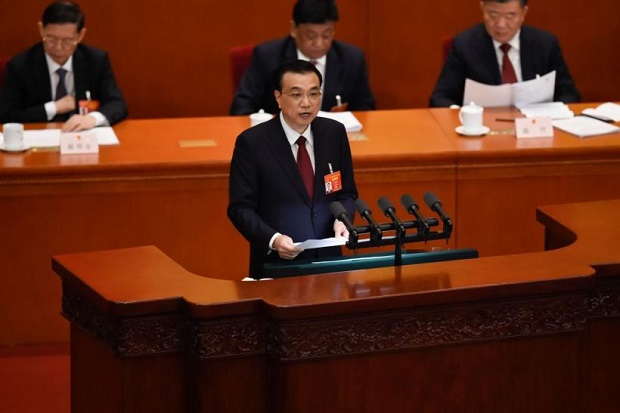
VIDUSHI R SINGH, Research Intern, Institute of Chinese Studies
The US-China trade war of 2018 began with tariffs being imposed on core sectors, such as industry inputs (steel, aluminium tariffs by the US) and agriculture (grain and seed tariffs by China). These attacks on primary industries have led to huge outcries on both sides, with several calls for the hurrying up of ongoing trade negotiations so that the political agendas of the leaders do not hurt the ordinary people.
This article discusses the current scenario of the two markets, with a particular focus on soybeans and associated businesses. Both countries have faced losses and market instability as a result of tariffs being put on agricultural commodities this manoeuvre, but while neither of the countries have ‘won’ in this particular sector, China seems to have incurred a lesser loss than the US.
US Agricultural Industry
The first round of the trade war saw China putting a 25 per cent retaliatory tariff on several US goods. One of the most critical commodities in the Chinese list was soybean – produced in regions that were majority supporters of Trump in 2016. The cleverly targeted tariffs have wreaked havoc on the US soybean market, with prices falling by over 13.4 per cent (based on the author’s calculations and data from United States Department of Agriculture) since May 2018. The fall in prices has further been caused by an approximate 78.6 per cent fall in demand from Chinese importers as of April 2019, based on a year on year comparison. The trade negotiations between President Trump and President Xi have included promises by the Chinese government regarding buying of over 5 million tonnes of soybean from the US, but no deadline has been set. It is possible that the unreliability of the US as a supplier of essential commodities to China has encouraged the Chinese populace to look for substitutes elsewhere, and US farmers are unlikely to have the same access to the Chinese market as they once enjoyed. As of now, there has been an almost complete crowding out of US soybean from the Chinese market, due to its inability to compete with local and Brazilian substitutes on prices. If the Chinese tariffs stay in place, the USDA projections have concluded that US soybean exports will not be able to reach pre-trade war levels even by 2024.
Another factor creating problems for the US agriculture industry is the increased costs of farm equipment and machinery. The tariffs on steel and aluminium imposed by Trump have led to a rise in the production costs of farm machinery. This, combined with the low expectations farmers have for the coming planting seasons, has resulted in a situation where farmer bankruptcies are on the rise, and US agricultural trade surplus has hit an unprecedented low, the lowest it has been since 2007. The plantation of soybean has fallen by 5 per cent in the last one year and is anticipated to reduce further, as farmers move away from soybean to other, more profitable crops. While the US Department of Agriculture has promised aid to farmers adding up to USD 12 billion, they have also asserted that this will only be a one-time assistance to help farmers regain control of farm operations.
Chinese Agricultural Industry
As for the Chinese side of the agriculture industry, the scenario seems to be mixed, as opposed to the blatantly negative situation that the US agricultural industry is facing.
The Central Committee of the Communist Party of China and the State Council unveiled its Number 1 Agricultural Document on 19 February 2019. The document focused on agricultural and rural issues and outlined policy goals for 2019 and 2020. Its focus on the “profound changes in the external environment” and ways to mitigate the same highlights China’s wariness with regards to the rising tensions in the trade war. This announcement falls in line with China’s 2015 mission to achieve absolute food security by balancing production and environmental concerns. While the agricultural reforms and the shift to the household responsibility system have helped increase productivity of land, China’s reliability on foreign markets for soybean has become a cause of concern, bringing down the agricultural trade balance, which would otherwise have been positive.
The government has, however, acted commendably fast in the past year to shift all soybean imports from the US to Brazil, which has allowed Chinese consumers some protection from the increased prices of US soybean. This has been followed by government encouragement of increased domestic production of soybean and other feed grains. However, the lower profitability of cultivation of soybean over rice or wheat has created a new need for subsidy and minimum procurement schemes.
Another factor cushioning Chinese soybean market has been the outbreak of African swine fever in various parts of the country since August 2018. The hog population in China has fallen by an estimated 13 per cent, and this has created a consequential fall in demand for feed grains and seeds. Since swine feed in China is 20 per cent composed of soybeans, this fall in demand has allowed for market prices to stabilize at a lower level than previously anticipated.
These steps have also been accompanied by reduced quality restrictions on imports and increased incentivisation for agricultural investment, as announced in the latest Number 1 document. So while there has been an undeniable fall in supply and increased uncertainty in the market, the government’s response has been able to prevent the need for total abstention from the consumption of soybean and several other vital parts of people’s diets as well as livestock feed.
Conclusion
The attempts by the two countries to regain equilibrium in their respective agricultural markets have provided some comfort to the consumers and producers of the tariffed products. The Chinese government, however, seems to have leveraged its position better to create changes very quickly to shield its populace from the worst impacts of the trade war. The US government, on the other hand, has only implemented superficial steps to manage the impact of the trade war in its borders, instead choosing to leave the outcome to market forces.
Irrespective of these safeguarding attempts by the governments, the agricultural markets in both countries are doing worse than previous financial years. Falling demands and accumulating stocks have created an imbalance in the global market. In the absence of intervention, this may result in an economic crash, as US farmers find themselves unable to repay loans and Chinese livestock producers fall short of sufficiently nutritious feed. Relaxing quality controls and giving out aids are sure to help in the short run; however, given the inconsistencies in the market, long-term solutions are necessary.




